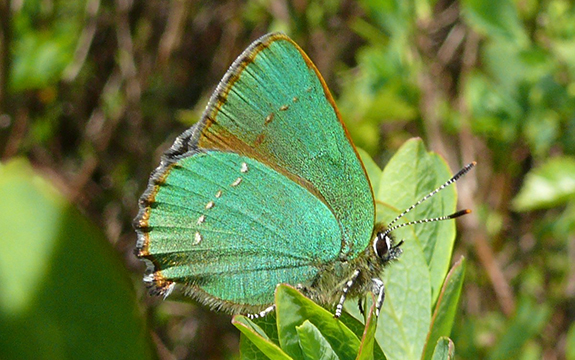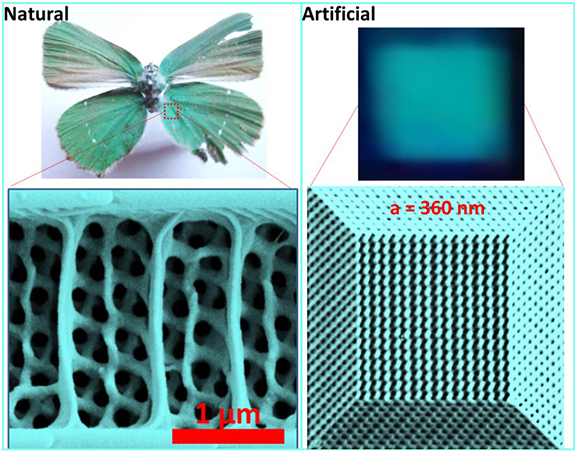Swinburne researchers mimic butterfly wing for compact new technology

In Summary
- By mimicking the structure of the Callophrys Rubi wing Swinburne researchers created a material with remarkable optical properties
- Using a special lithography technique, the team was able to make photonic ‘gyroid’ nanostructures similar to those found in the butterfly's wings
These new gyroid structures could help make more compact light based electronics because, thanks to their smaller size, larger numbers of devices can be integrated onto a single chip.
Inspired by the intricate structure of a butterfly wing, Swinburne researchers have developed a technique that could be used to make more brilliant computer screens.
The researchers used a special printing technique to create tiny structures similar to those found in the wings of the Callophrys Rubi butterfly, also known as the Green Hairstreak.
In some iridescent butterfly wings, such as the Green Hairstreak, the wing is made up of a pattern of intertwining and curved surfaces, known as a gyroid structure. This gyroid structure has amazing properties when it comes to its interactions with light.
The researchers used two-beams of light to print at a super-resolution, creating gyroid structures that are three-dimensional and mechanically strong.
Lead author Dr Zongsong Gan from Swinburne’s Centre for Micro-Photonics says that materials made from these artificial gyroids should respond to light at ultrafast speeds making them ideal for high-speed switches.
He says the technique has two significant advantages.
"The first is that it has improved resolution and the second is that the materials fabricated with this technique have better mechanical strength.
"These new gyroid structures could help make more compact light based electronics because, thanks to their smaller size, larger numbers of devices can be integrated onto a single chip.
“However, for three-dimensional devices, smaller and more compact also means there is a higher risk of structure collapse because of weaker mechanical strength.
"Our fabrication technique allows us to make stronger architectures to overcome this problem," Dr Gan says.

Comparison of natural gyroid structure with artificial structure.
This research was funded by the Australian Research Council Centre for Ultrahigh-bandwidth Devices for Optical Systems, the Laureate Fellowship scheme, and the Science and Industry Endowment Fund under the John Stocker Postdoctoral Fellowship.
The research findings were published in the journal Science Advances.

